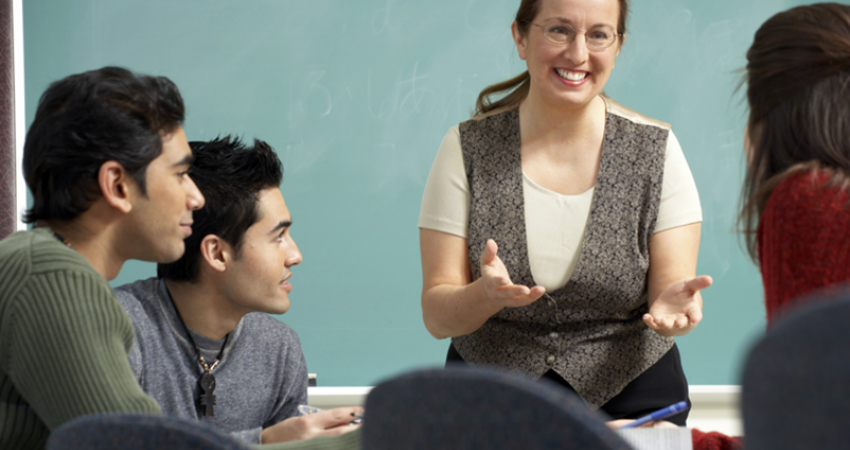
By Melissa Ballard - November 2015
Polman, Newman, Saul, and Farrar have worked for six years on Science Literacy through Science Journalism or SciJourn. This science journalism program for teens seeks to foster science literacy centered on developing fluency in the application and use of science in personal life. This paper summarizes and reflects on the authors’ previous research with SciJourn, identifying the key elements of their vision of teaching science literacy through science journalism.
The authors describe two definitions of science literacy in the science education community. The first, most prominent definition focuses on knowledge within science: Students practice science firsthand and model professional scientific practices such as conducting experiments, constructing arguments from evidence, and analyzing data.
The second approach to science literacy focuses on preparing students to make decisions about STEM-related situations in their everyday lives. The researchers argue that, in order to make informed decisions using multiple, and sometimes competing, sources of scientific information, youth must become “competent outsiders”—or “people who have learned to recognize the moments when science has some bearing on their needs and interests and to interact with sources of scientific expertise in ways that help them achieve their own goals” (Feinstein, 2011).
The authors believe that science journalism is an effective educational approach to fostering this second kind of science literacy.
Research Design
The article covers several aspects of the authors’ previous work. This brief focuses on five criteria the authors used to evaluate student-written science news articles. Adapted from the professional practices of science journalists, the criteria demonstrate the specific ways in which science journalism supports the authors’ vision of science literacy for middle and high school students.
To outline these criteria, the authors looked to their implementation research with students and educators during the second iteration of the SciJourn program in 2009–2011. They used data from observations of classrooms and of professional development sessions, student and teacher interviews, and student science news stories published in SciJourner, a professionally edited science news magazine managed by the project.
Research Findings
The authors see science journalism supporting science literacy with the goal of developing competent outsiders in five primary ways.
- Providing personal connections. Expert journalists often use personal angles to help readers relate to the story and make it more engaging. SciJourn facilitators and the editor of SciJourner found that having students first draft a story and then construct a “lead” based on their personal connection to the content was most effective. The researchers also found that, when students were given the freedom to select story topics, they engaged more strongly with the science.
- Developing research skills. Many students (and adults) used Wikipedia and a general browser search as primary sources of information. SciJourn facilitators take the approach that students should be skeptical of all websites and learn to determine credibility for specific purposes. Polman and colleagues recommend teaching that Wikipedia can be used to identify scientific terminology that can help refine further search results.
- Supporting the use of multiple credible, attributed sources. The journalistic convention of attributing sources is notably absent from texts that students often read—school textbooks, press releases, and many easily accessible or popular websites. Students therefore lack understanding of the importance of using multiple credible sources. The SciJourn researchers emphasize the importance of explicitly discussing scientific credentials, peer review, and the value of professionals’ experiential knowledge.
- Providing context for science content. Information in science news stories must be contextualized in its scientific background. Science journalism reflects the process of science research, including characteristics such as disagreement and consensus. Furthermore, they contextualize information in terms of risk, scale, and cost. In writing science news articles, students are provided an authentic context for learning science practices and content.
- Opportunities to synthesize information. A primary function of science journalism is helping readers make sense of the content; sense-making is also a real-life skill required of any citizen. Acknowledging the difficulty of developing this skill, Polman and colleagues recommend giving students access to educators with strong content knowledge. Additionally, interviews with research or clinical experts were highly effective in fostering students’ understanding of science content.
Theoretical Basis
This research is heavily informed by a sociocultural theory of learning and practice. The authors view science journalism as a community of professionals who share particular skills, knowledge, and practices. If they are made explicit, these rules can be translated to educational contexts.
Implications for Practice
Science educators may use this paper to help them examine personal and organizational definitions of science literacy. Program models and research on cultivating science literacy that is useful in everyday life are limited. Science journalism is one such model, as the skills required to produce high-quality science news articles have direct parallels to the skills of a scientifically literate person. Many of the connections to science literacy described in this paper can be generalized for informal science educators seeking to develop program models that foster science literacy for “competent outsiders.”
Related Briefs
Bevan, B. (2011). Reframing science literacy: An ISE research brief discussing Feinstein’s "Salvaging science literacy." Retrieved from http://rr2p.org/article/232
Ballard, M. (2014). Place-based expertise and science knowledge shape civic action: An ISE research brief discussing Birmingham & Calabrese Barton, “Putting on a green carnival: Youth taking educated action on socioscientific issues.” Retrieved from http://rr2p.org/article/341
Shea, M. (2013). Negotiating Science Identities with Gender, Race, and Perceptions of Expertise Across Settings : A JLS research brief discussing Rahm’s article, “Collaborative imaginaries and multi-sited ethnography: space-time dimensions of engagement in an afterschool science programme for girls.” Retrieved from http://rr2p.org/article/306
Original Article Citation
Polman, J. L., Newman, A., Saul, E. W., & Farrar, C. (2014). Adapting practices of science journalism to foster science literacy. Science Education, 98(5), 766–791
http://onlinelibrary.wiley.com...




